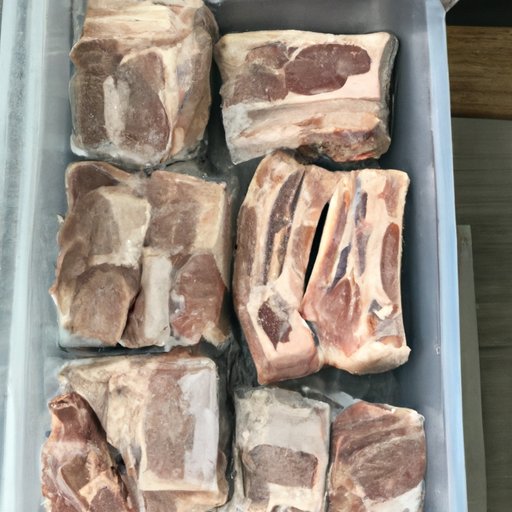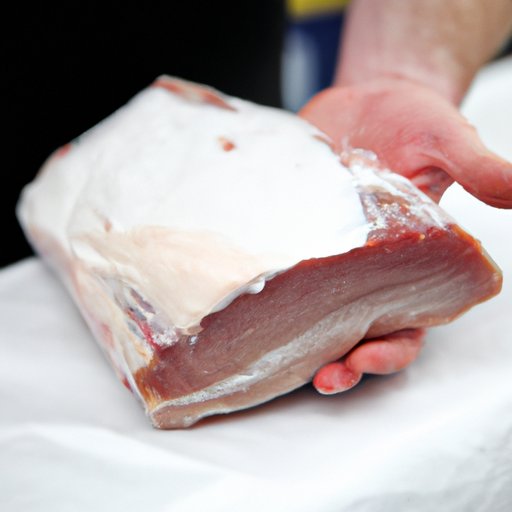
Introduction
Sorting through your freezer, you may come across a pack of pork you had previously frozen and can no longer remember when exactly you did so. You might wonder, “Can you refreeze pork?” But deciding what to do next depends on many factors, including when and how safely the pork was initially frozen and thawed. In this article, we’ll delve into common myths, tips, and creative recipes for refreezing pork, all while prioritizing safety and quality in your home kitchen.
The Truth About Refreezing Pork: Debunking Common Myths and Misconceptions
There are several myths and misconceptions when it comes to refreezing pork. One major reason for this is that it pertains to food safety, which means the topic is not always straightforward. One common myth is that it’s the thawing and refreezing that can cause contamination, but the truth is that the issue results from the bacteria that grow during the time between the initial freeze, thaw, and refreeze. Bacteria thrive in warm temperatures and can grow rapidly in the danger zone between 4℃ and 60℃
However, the risk of significant bacterial growth is slim if you follow guidelines for safe handling, cooking, and storing of pork products. For example, the National Pork Board suggests that, after cooking, pork should be stored in the refrigerator no longer than four days and in the freezer no longer than six months before it begins to lose quality.
Maximizing Your Meat: Tips for Refreezing Pork Safely and Effectively
The key to refreezing pork safely is to do so as soon as possible after the initial thaw. Suppose you plan to refreeze pork for an extended period, such as for more than two weeks. In that case, you should take extra precautions to maximize the quality and safety of your meat.
One way to do this is to cook the pork immediately after thawing and then refreeze it once it is cooked. If you choose this method, be sure to cool the meat quickly after cooking and place it immediately in the freezer. Alternatively, you can refrigerate the meat overnight, then refreeze it the next day.
If you decide to refreeze raw pork, it’s essential to thaw it in a fridge set at 4°C or below, never at room temperature. It’s also crucial to ensure that pork has reached the recommended internal temperature of 71°C before freezing the meat again.
From Freezer to Plate: A Guide to Refreezing Pork for Meal Prepping
Meal prepping is an excellent way to make life more manageable, but it’s critical to follow proper food safety measures when doing so. If you’re planning to refreeze previously frozen pork for meal prep, be sure it thawed safely in the fridge and cooked promptly to the correct temperature.
It’s also a good idea to keep track of the date when the pork was initially frozen, so you can use it before its quality begins to decline. Label the thawed or cooked pork with the current date and the date to use by so that you can keep track of it better. Organizing your freezer is essential to this process. You should prioritize the first-in, first-out method of using older pork before using newer.
Saving Money and Reducing Waste: Refreezing Pork in a Sustainable Kitchen
When practicing sustainable cooking, every bit counts, and refreezing pork can help reduce waste and save money. The key is to utilize your pork in creative new ways to keep meals exciting and fresh.
One technique you can try is to cut your pork into smaller portions before freezing, so you only refreeze what you need. Another way to get the most of your pork is to make casseroles, soups, and stews, where the pork can be mixed in with other ingredients and re-cooked. Remember, though, that the quality and texture of pork may decrease marginally after each freeze.

The Food Safety Debate: Experts Weigh in on Refreezing Pork
The food safety debate surrounding refreezing pork is ongoing, with different opinions, viewpoints, and research reports on the matter. In general, food safety experts agree that if you handle the pork correctly before and after refreezing, it can be safe to do so.
However, the United States Department of Agriculture (USDA) recommends that customers not refreeze raw meat products after thawing because of potential bacterial hazards. Instead, the USDA advises cooking the meat before refreezing it, as reflected in their Food Safety and Inspection Service (FSIS) guidelines.
Leftovers 2.0: Transforming Frozen Pork into Delicious New Meals with Refreezing Techniques
One of the benefits of refreezing pork is that it allows you to get creative in the kitchen, even with leftovers. Here are some ideas to transform your frozen pork into new and exciting dishes:
- Shred cooked pork and use it to stuff tacos, burritos, or enchiladas.
- Mix the pork with veggies, rice or quinoa, and drizzle with your favorite sauce for an easy stir fry dinner.
- Use pork in place of beef or chicken in classic recipes such as shepherd’s pie or lasagne.
Conclusion
Refreezing pork is a convenient way to cut down on waste and extend your meat supply, but it’s essential to prioritize food safety. By following proper handling, cooking, and storage techniques, you can safely and confidently thaw and refreeze your pork. Remember to keep track of the date when the pork was initially frozen and organize your freezer accordingly. With these tips and tricks, you can enjoy delicious meals and do your part in reducing food waste.




